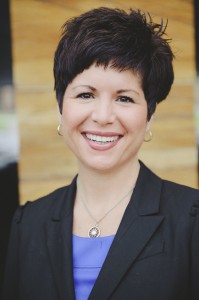Sunnie Southern, founder and CEO of Viable Synergy, spends her days pushing for health IT innovation. Her firm provides products and consulting services for commercialization and community engagement. One of its best-known projects is Innov8 for Health, a Cincinnati-based tech accelerator. Southern, a registered dietitian who started her firm in 2010, talked about her work and about EMRs — as they are and as they could be.
What does Viable Synergy do?
Viable Synergy specializes in commercializing assets that transform health. It offers consulting services and proprietary products that support the development and deployment of innovative health solutions from concept to customer. This year and next, Viable Synergy is focused on the institutional market by helping hospitals and provider organizations to generate new (non-clinical) revenue from currently available assets.
You are part of the Health Data Consortium. What is that?
The Health Data Consortium is a collaboration among government, non-profit and private sector organizations working to foster the availability and innovative use of data to improve health and health care.
Viable Synergy leads the Ohio Affiliate of the Health Data Consortium through our Innov8 for Health program. HDC Affiliates host events and build local networks of groups including startups, entrepreneurs, health companies, universities, government agencies and other innovators to create an ecosystem around using open data to improve health outcomes for individuals and communities.
Do you think EMRs are reaching their potential in improving health?
We are at the very beginning of a new era of leveraging technology to improve health and care and reduce costs. EHRs are an essential component of gaining access to health data to make better decisions.
What is missing from the equation?
Time. We need time to bring the plans to fruition to increase engagement and activation.
The essential elements are in place:
- Standards that provide direction on necessary features and now interoperability/accessibility (MU2)
- Incentives to increase purchase, implementation and meaningful use
- Awareness within the health care community and beyond about the importance of ensuring that providers and patients have access to the critical information they need to make informed decisions
What goals do you think we should be prioritizing in health IT right now?
Interoperability, integration and convergence. There are so many places that providers and patients must go to access critical information that it is difficult to get a complete picture of a patient’s history or a physician’s patient population. I hope that we will begin to see tools that allow for data to be aggregated from multiple sources and provided in an easily consumable fashion. We’ll also need the appropriate regulations to secure and support the aggregation.
What’s the most exciting thing you see happening in health IT at the moment?
The whole system is being turned inside out and upside down. Everyone across the health care continuum is focusing on how to perform their role better. Innovative solutions are popping up everywhere. The chaos is creating massive opportunities. We really have a chance to make a difference. I believe it is the best time ever to be an entrepreneur in health care. So glad to be a part of it!














